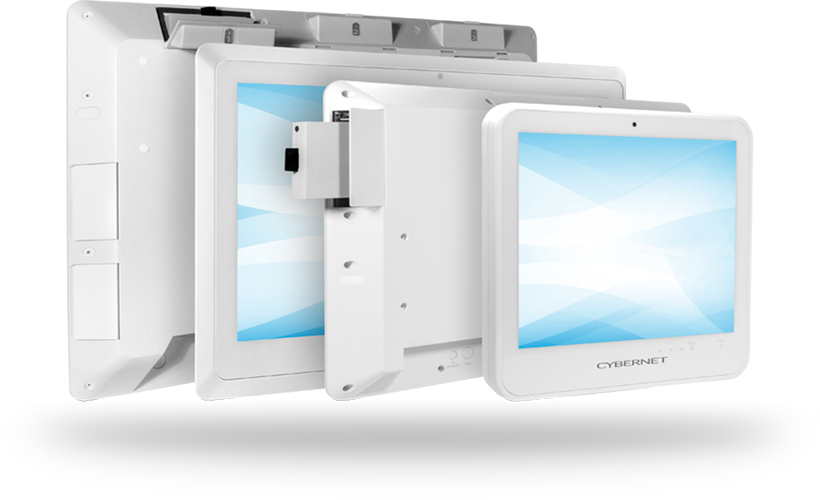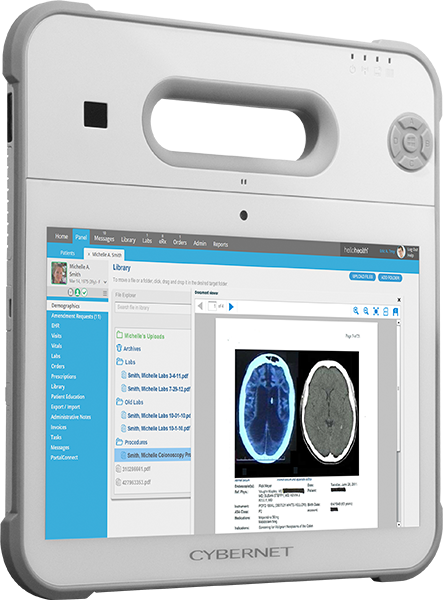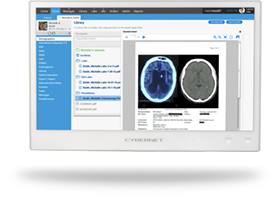The hospice care industry faces many challenges as the world population ages. Staffing shortages, government regulations, and rising demand for high-quality end-of-life care are just a few confronted by hospice staff.
In response, hospice facilities are turning to hospice care technology like telehospice and AI computers to overcome the challenges while still providing top-notch patient care.
What is Hospice Care?
Hospice care is a branch of palliative care, a healthcare specialty providing comfort and quality of life for terminally ill patients. Hospice care focuses explicitly on those patients with a life expectancy of six months or less.
Application of Hospice Care Technology
Hospice care technology are devices, equipment, and systems that revolve around hospice patient care and comfort. This may be direct, like a watch monitoring the patient's heartbeat, or indirect, like VR goggles to train a hospice team. The following four are a sample of the technology and the challenges they address.
Connectivity via Telehospice
Telehealth is a technology that connects patients and providers so they don't have to be in the same room. Telephone calls and, more commonly, virtual connections via video conferencing apps like Zoom are examples of telehealth.
Telehospice is a subset of telehealth. The hospice care technology connects hospice residents, facility staff, and caregivers with loved ones and off-site medical personnel.
Watching 24/7 via Remote Patient Monitoring
As its name implies, remote patient monitoring (RPM) monitors patient vitals like heart rate and breathing, and sends the data to medical staff watching everything remotely.
RPM devices range from EKG machines connected to hospice patients directly to wearables like heart-monitoring bracelets.
Relief and Training through Virtual Reality
Virtual reality (VR) is a 3D simulation created by computers. Viewers can experience these images through helmets or goggles, or even feel them via haptic feedback from special gloves and clothing.
Hospice patients can use VR to relax or reduce anxiety. Hospice nurses and other team members benefit from the technology as a teaching tool, learning how to provide the best possible comfort and care on virtual terminal patients as well as handle their demise.
Artificial Intelligence and the Management of Minutiae
Artificial intelligence (AI) are computer programs that simulate human thinking: learning, understanding, problem-solving, etc. Though relatively new, AI is finding many inroads across the medical field, including hospice care.
AI use in hospice are numerous. AI computers using predictive analytics to forecast a patient's remaining lifespan, generating personalized care plans, and managing electronic medical records (EMR) are just a few ways the technology is meeting hospice’s challenges.
Benefits of Hospice Care Technology
Hospice patients and their caregivers have benefited greatly from healthcare technologies like medical computers, where they have:
- Connected residents with providers for checkups without leaving their residences or hospice facilities. This greatly aids those with mobility issues or who are seriously ill. Patients can also connect to loved ones even if they are far away or in a different timezone.
- Provided patient information to caregivers through their medical-grade tablets. Caregivers also benefit, as they can suffer depression, health issues, financial problems, and even death due to the stress of the job.
- Allowed providers and other medical staff to monitor the hospice patient's conditions remotely and in real time. They can contact caregivers onsite if further treatment is necessary or 911 for emergencies.
- Reduced patient anxiety and other distress through pleasant virtual experiences like relaxing beaches or vacation pictures.
- Trained new caregivers via VR or allowed remote consultation with specialists on difficult patients or complex treatments.
- Personalized patient treatment plans, drug dosages, and even sleep schedules thanks to AI-driven systems. This not only results in more high-quality care but also lower costs as unnecessary or costly procedures are flagged and stopped.
Choosing the Right Hospice Care Technology for You
Medical groups looking at hospice care technology should ask themselves the following:
What are the Specific Challenges You're Answering?
You should ensure your medical devices and equipment solve your specific hospice care challenges. Example: do you need to monitor patients' vitals constantly? Or can the caregiver obtain the data and transmit it to you? The answers to these questions require different solutions.
Is the New Technology Compatible?
Make sure any hospice care technology works with your current healthcare systems and networks. Example: Can you seamlessly bring up patients' EMRs at the hospital and hospice facilities? Or will your healthcare IT and staff have to manage two sets of records? Medical PCs with legacy compatibility can go a long way in ensuring a smooth exchange between the older and newer systems.
Are Patients' Information Protected?
Patient data is highly sensitive and legally protected through regulations like HIPAA. You should review any hospice technology, like all-in-one medical PCs, to ensure they're secure against possible breaches. Built-in RFID readers and Imprivata Single Sign-On verify that only approved hospice staff can bring up a patient's EMR and its details.
Is the Technology Within Budget?
After answering the above questions, you'll need to calculate how much that hospice care technology will cost. Don't forget to consider initial setup costs and ongoing maintenance. For example, will the equipment or software need to be upgraded? Are there any annual fees? Even more fees to move data to the new systems? The answers to these questions (and more!) should provide a good return on investment (ROI) over several years. A true original equipment manufacturer (OEM) can promptly answer these questions and more, as they're far more familiar with their products and services than resellers.
Master Your Hospice Care Technology with Computers By Cybernet
The ever-increasing population means many challenges to hospice care, whose aim is to bring final comfort to patients with six months or less to live. Technology is answering many of those challenges, with AI providing personalized care and telehospice connecting loved ones from a distance as examples.
Thanks to the digital transformation in healthcare, medical computers are at the heart of this hospice care technology. Contact the team at Cybernet today if you and your hospice team are looking for the ones right for your wants and needs. We're an OEM and control entirely our lineup's design and bill of materials. Not finding what you're looking for among our numerous pre-builds? No problem! We have years of experience in the medical technology field, and we are confident we can custom-build one to meet your exact specifications.


